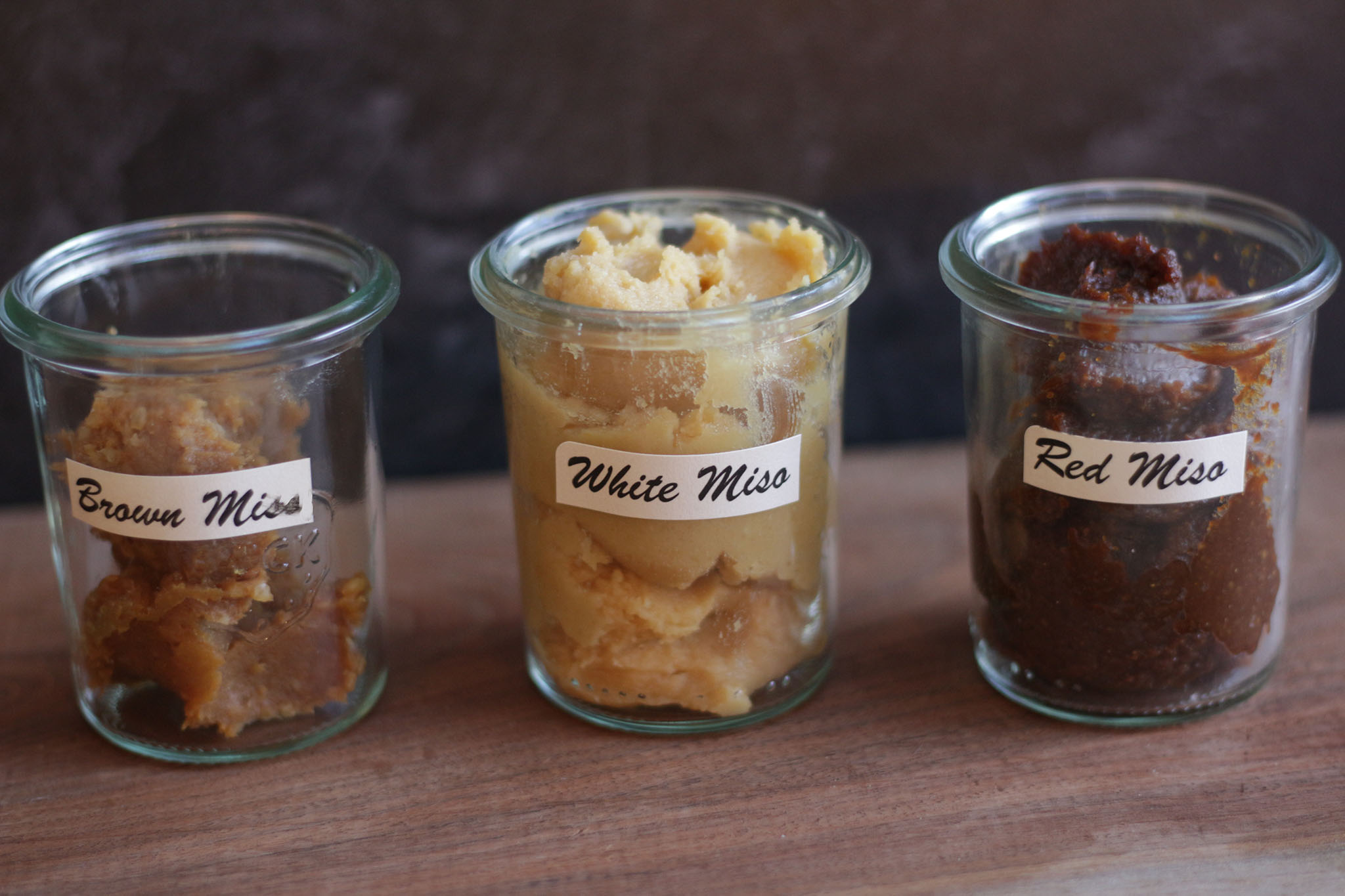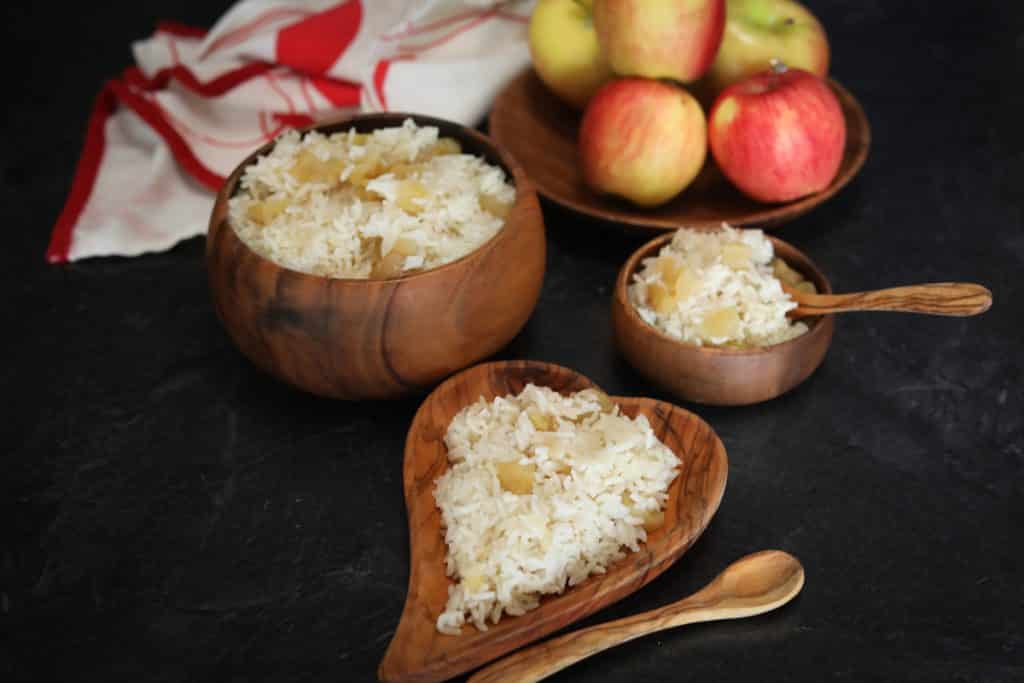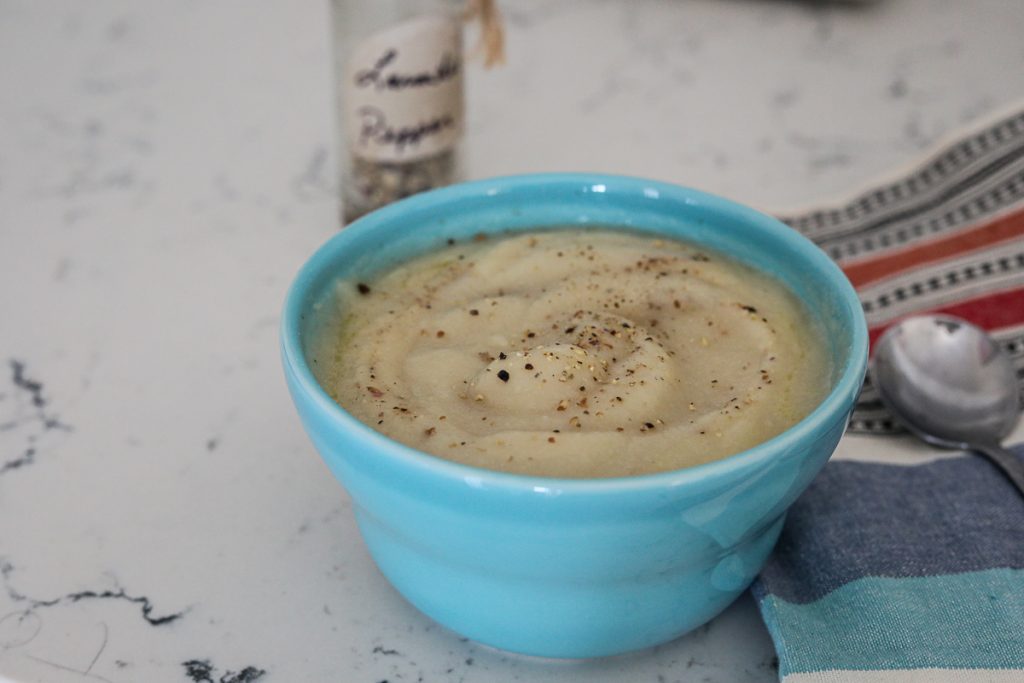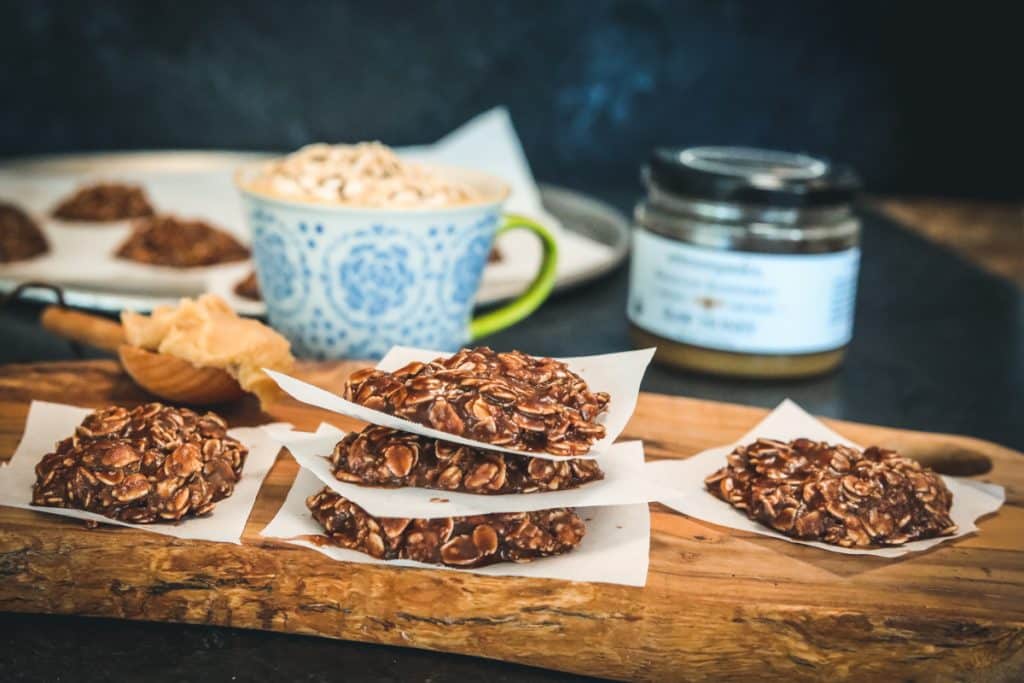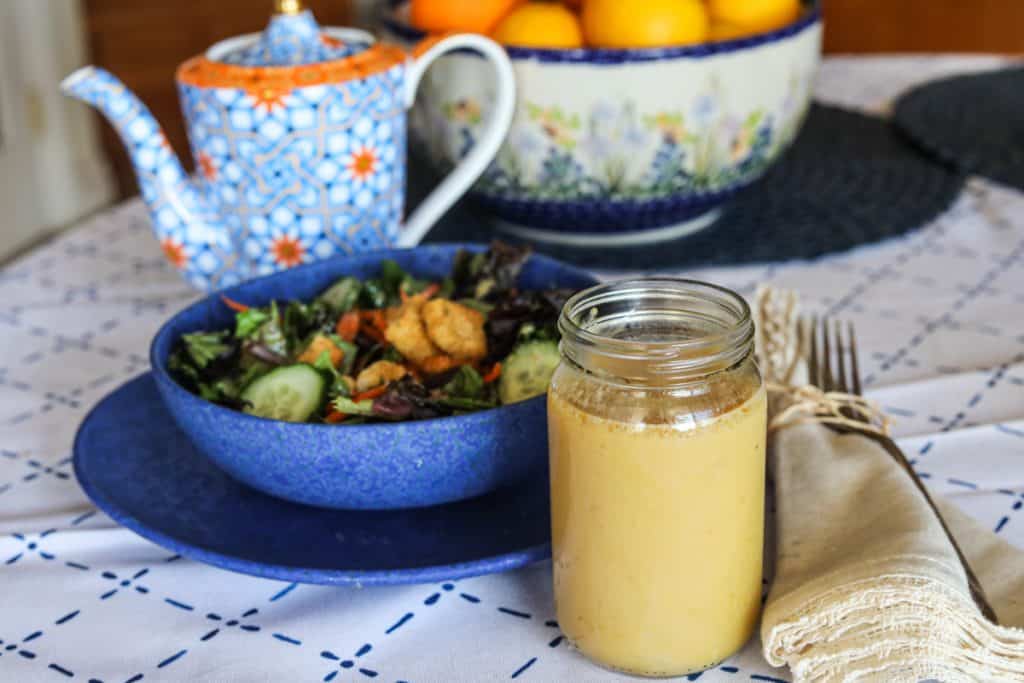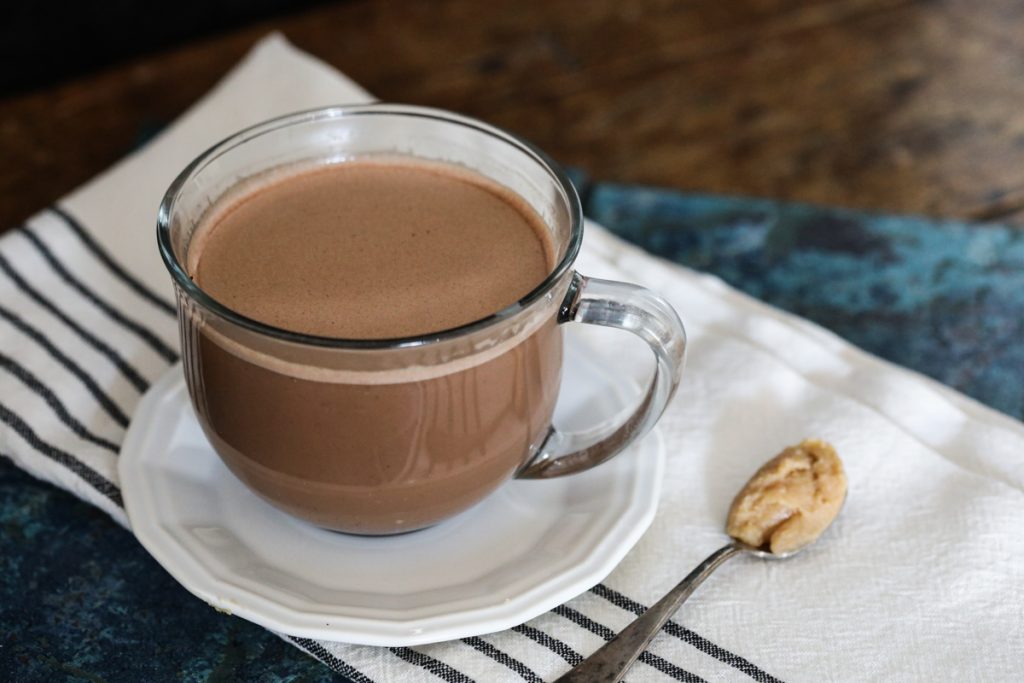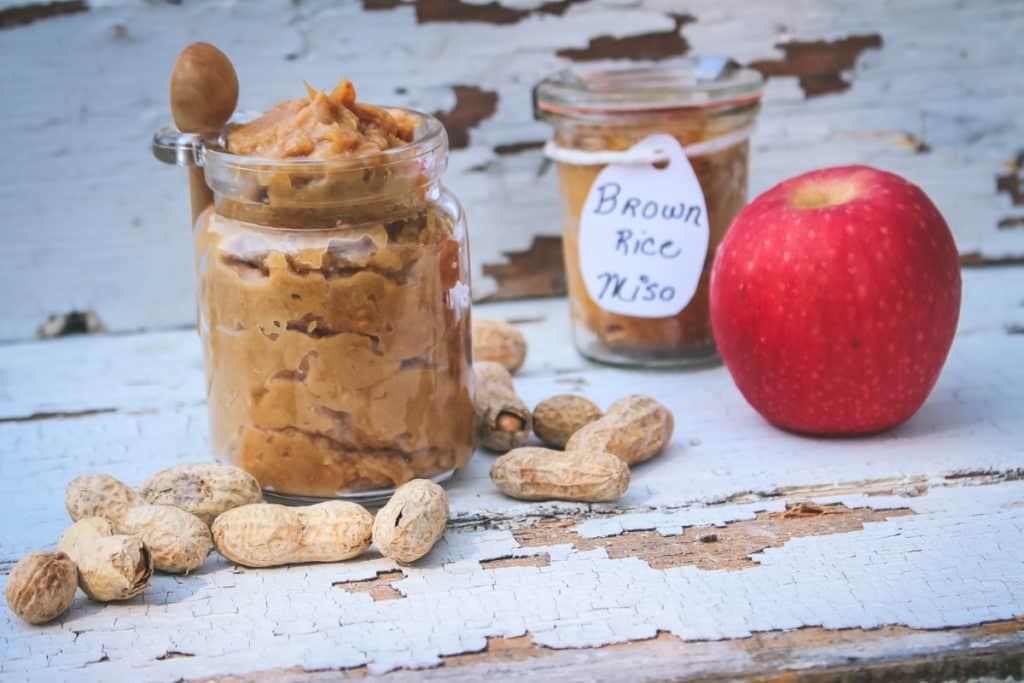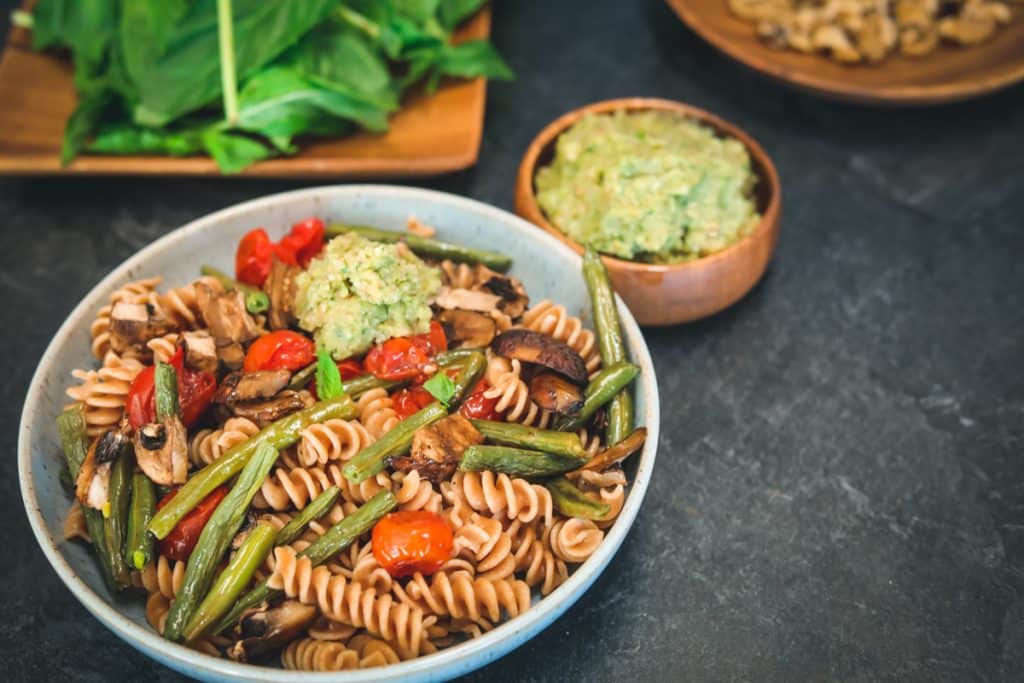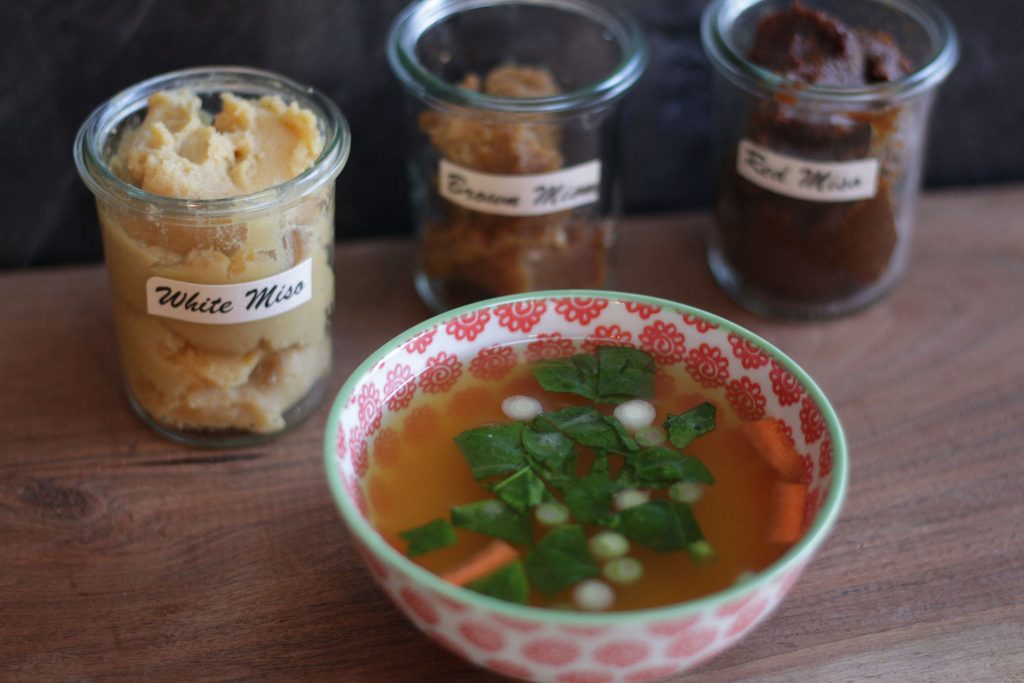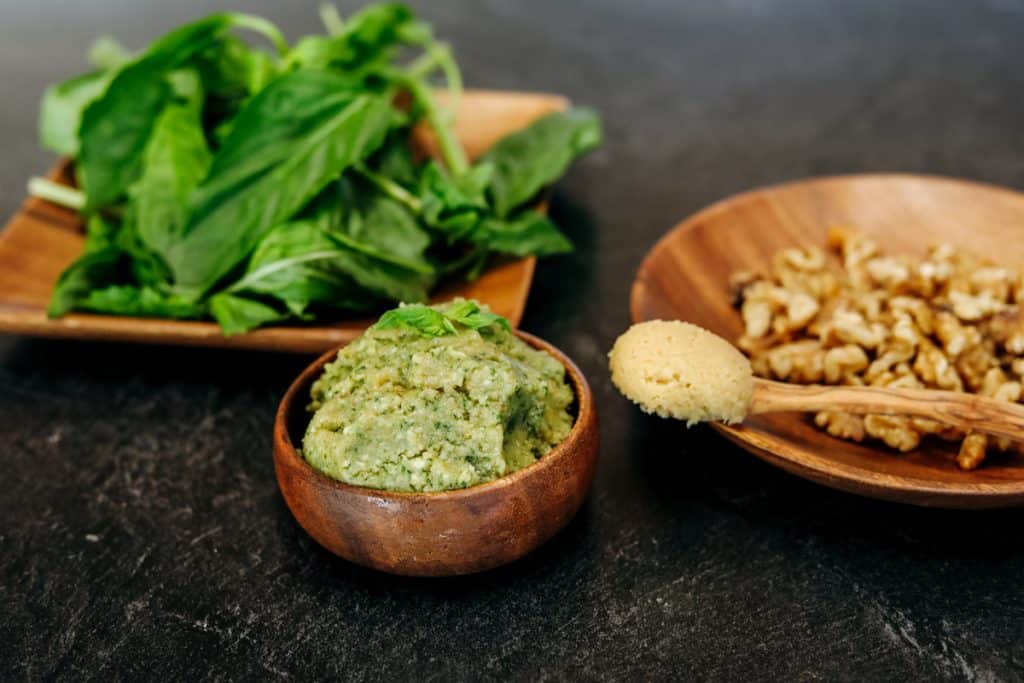
Reasons And Recipes To Have More Miso
What is Miso?
 When people think of miso, they mostly think of miso soup - but it is so much more. It has an incredible microbial makeup and is a nutritional powerhouse. Miso is so simple to make and use in recipes that I've found myself making and consuming it almost every day.
When people think of miso, they mostly think of miso soup - but it is so much more. It has an incredible microbial makeup and is a nutritional powerhouse. Miso is so simple to make and use in recipes that I've found myself making and consuming it almost every day.
Miso is a salty paste made from fermented beans (usually soybeans) but it can be made with chickpeas or other beans. You add salt and koji (the fungus Aspergillus Oryzae) to the beans and as it ferments for months (or even years!) the enzymes in the koji work together with the microorganisms in the environment to break down the structure of the beans and grains into amino acids, fatty acids, and simple sugars.
Miso and Blood Pressure
Miso is salty tasting, but don't worry about the salt raising your blood pressure because with the incredible help of microbes it seems it lowers blood pressure rather than raising it. Miso is reported to inhibit angiotensin-converting enzyme (ACE) activity. The angiotensin system has a strong impact on blood pressure, including salt-sensitive hypertension. Miso is found, to be able to decrease blood pressure and sympathetic activity through the inhibition of ACE activity. [1]
Miso soup has been eaten in Japan and China for many centuries and has been attracting the attention of many because of its health and anti-aging benefits. It’s also quite delicious. When you aren’t feeling well, a bowl of miso soup can be especially soothing to the gut. You simply make a broth, add some veggies, add the miso paste, stir, and you have soup. Check out my recipe below. Because miso is fermented, it’s filled with beneficial, live probiotic cultures. Miso is great for strengthening the immune system and helping to combat viral infections.
Miso Lasts Forever in Your Fridge
Miso gets better with age and won't turn rancid or spoil. I keep mine in the refrigerator and it seems to get better tasting the longer I have it. Some miso can even be over ten years old! The microbes in the miso preserve it and keep out pathogens. And when you eat it, it will help preserve you too! The oldest miso found is at the Ohio Miso Company 1979-1980 and they say it is still quite good and has an earthy flavor similar to a bouillon cube.
Let's get into the many benefits of this amazing fermented food.
Reasons And Recipes To Have More Miso
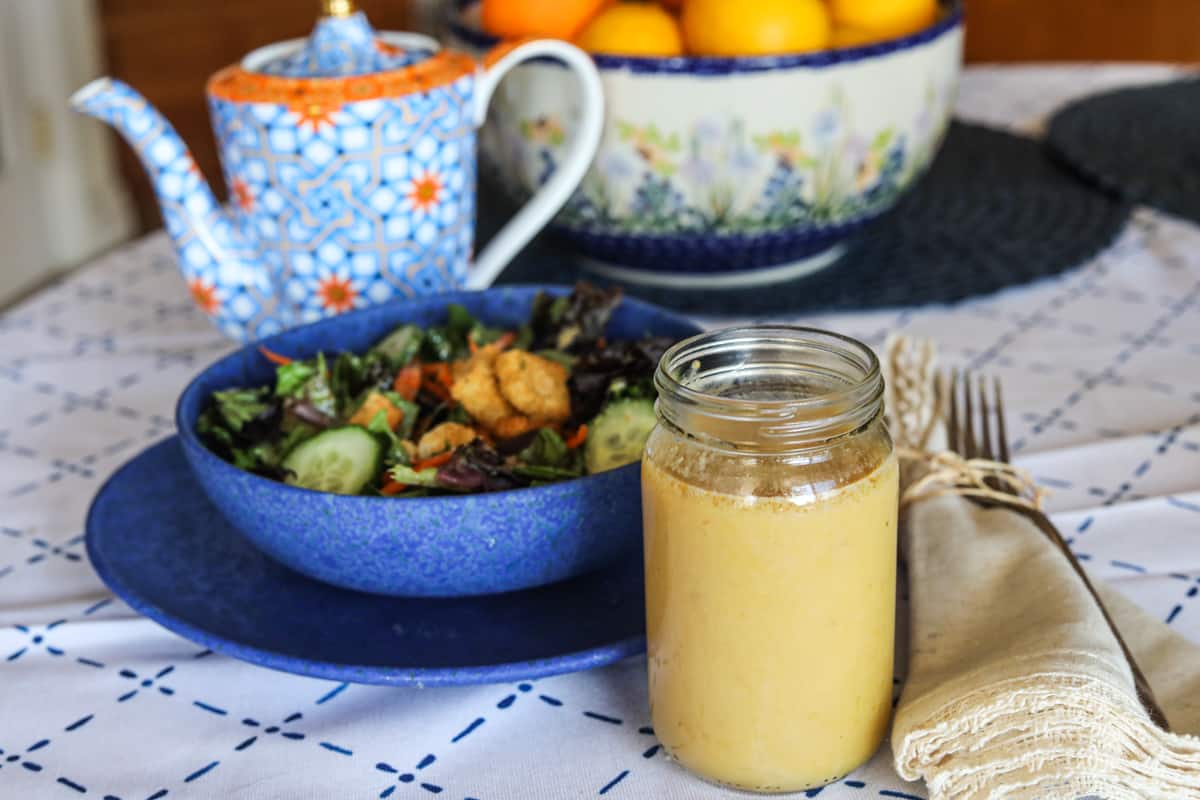
Miso and Cholesterol
One of my favorite books on Miso, called "Miso, Tempeh, Natto and Other Tasty Ferments," explains so well how miso can help us keep our arteries clean. Author Kirsten Shockey explains, "Raw soybeans contain saponins which produce a soap-like froth when you wash them. Well once we consume them in miso, they continue to act as a washing agent but this time inside our blood vessels, which can become blocked with cholesterol. The saponins are joined by lecithin and linoleic acid, which helps dissolve cholesterol clinging to our blood vessels."
A study that was published in Japanese Pharmacology and Therapeutics used Japanese adult male volunteers whose serum total cholesterol levels were between 200-280mg/dl showed that consuming miso soup for three months resulted in a 7.6 percent decrease in total cholesterol levels. This significantly lowered levels of bad LDL cholesterol compared to the placebo.[2]

Miso and Cancer Risk
Miso may offer protection from many types of cancer and even radiation poisoning. In humans, studies show that regular miso consumption may reduce the risk of liver and breast cancer by 50–54%. Breast cancer protection appears especially beneficial for postmenopausal women. [3,4,5]
Tatsuichiro Akizuki, M.D. used miso to treat those who were sick after surviving the dropping of the atomic bomb on Nagasaki. Akizuki wrote about his experience after the war in How We Survived Nagasaki.
"On August 9, 1945, the atomic bomb was dropped on Nagasaki. It killed many thousands of people. The hospital I was in charge of at the time was located only one mile from the center of the blast. It was destroyed completely. My assistants and I helped many victims who suffered from the effects of the bomb. In my hospital, there was a large stock of miso and tamari (the liquid that comes off the miso during the fermentation process and also used as a condiment and soup stock). We also kept plenty of brown rice and wakame (a sea vegetable). So I fed my co-workers brown rice and miso soup. I remember that none of them suffered from the atomic radiation. I believe this is because they had been eating miso soup."
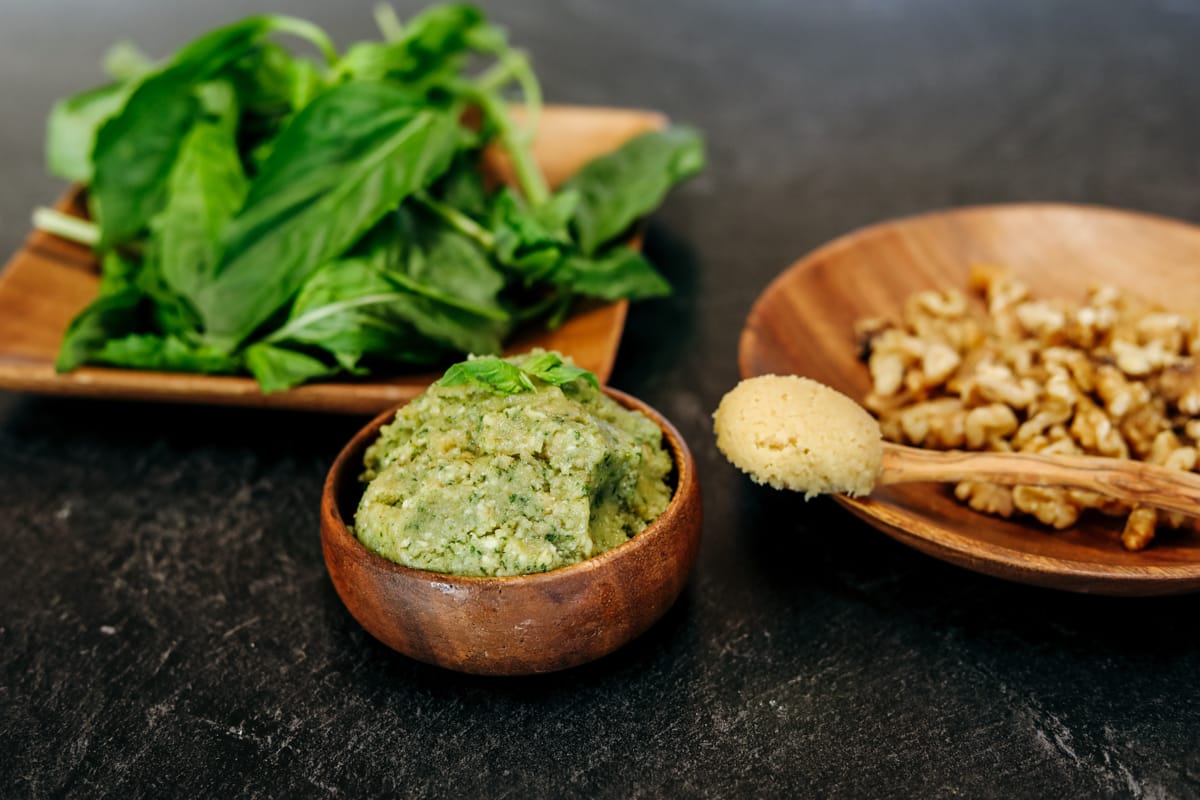
Miso gives you more B vitamins
B vitamins are crucial to having a healthy immune system. Miso is brimming with lots of B vitamins including B1 (thiamin), B2 (riboflavin), B3 (niacin), B5 (pantothenic acid), and B9 (folate). B3, B5, B9, and B12 are specifically important to support and protect the nervous system and ensure it functions properly. The process of fermentation increases the B vitamins in all cultured foods. Foods such as kefir, cultured veggies, kombucha, and miso all have more B vitamins once fermented and this is mostly from the lactic acid bacteria.

Miso Promotes Brain Health
All fermented foods (including kefir, kombucha, and cultured vegetables) help immensely with brain health and miso is no exception. A lack of B vitamins can damage the myelin sheath that surrounds and protects nerves in your body. Even a mild B12 deficiency may affect the nervous system and the proper functioning of the brain. Probiotic-rich foods such as miso may benefit brain health by helping improve memory and reducing symptoms of anxiety, stress, and depression. Many studies support this. [6,7,8]
The Different Types of Miso
There are many types of miso, and the flavors will change depending on the length of the fermentation process. The longer the process, the darker the miso will become.
Miso can be easily stirred into broths or soups and can be added to many recipes such as salad dressings and dips. You'll love having this stable probiotic powerhouse in your fridge. You can even make it yourself but it can take months or years to make. Fortunately, since there are so many really good varieties at stores, you can easily pick one up.
The most common types of miso are brown, yellow, red, and white misos.
White miso paste is usually made from soybeans that have been fermented with koji. This results in a lighter color and gives the final product a slightly sweeter taste. It's the one I use most often and like the best. I use it in salad dressings, soups, and even sauces.
Brown or Yellow Miso is also made with fermented soybeans and barley. It's slightly stronger than white miso, but not as strong as red miso. It tastes good and I use it in marinades and glazes on chicken and fish.
Red Miso is made from soybeans that have been fermented for longer periods of time, typically with barley or other grains. It tends to have a deep, rich, and salty flavor along with a darker color that ranges from red to brown. You only need to use a little bit of this to get a lot of flavor. It's great on marinades for meat and vegetables.
So head to your health food store, pick up some miso, and check out the many ways I use miso in some of my recipes.
Listen To My Podcast
When people think of miso, they mostly think of miso soup, but it is so much more. It has an incredible microbial makeup and is a nutritional powerhouse and is so simple to use. It has things that will help you stay healthy and I have lots of fun and easy ways to use miso. Check out this podcast to learn more.
References I talked about:
References:
- https://www.ncbi.nlm.nih.gov/pmc/articles/PMC5313421/
- https://www.researchgate.net/publication/289887634/
- https://pubmed.ncbi.nlm.nih.gov/15688396/
- https://pubmed.ncbi.nlm.nih.gov/15373231/
- https://pubmed.ncbi.nlm.nih.gov/12813174/
- https://www.ncbi.nlm.nih.gov/pmc/articles/PMC5216880/
- https://pubmed.ncbi.nlm.nih.gov/27413138/
- https://pubmed.ncbi.nlm.nih.gov/27413138/
Are you on the list?
Sign up today and I'll send you my free Getting Started Guide!
Each week I'll send you updates, tips, recipes, and more! You might even be a winner of my weekly giveaway! (starter cultures, memberships, and more!)
Come be a part of my cultured food family!

